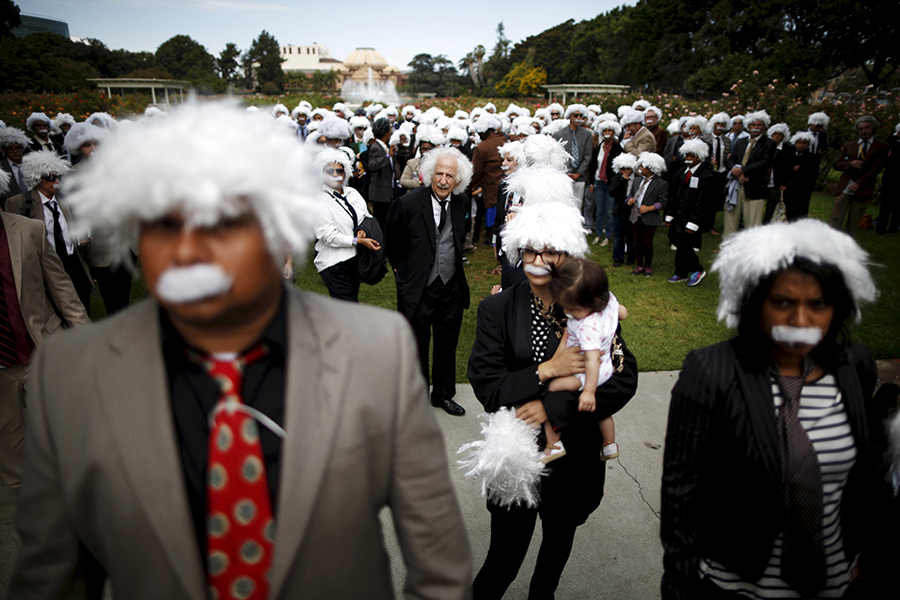Why the discovery of gravitational waves would be such a huge deal
Loading...
The Internet is ablaze – again – over gravitational waves, the theorized dips and undulations in the fabric of spacetime produced by cataclysmic events such as colliding black holes or supernovas. They were first predicted a century ago by Albert Einstein in his general theory of relativity.
Only about three months after scientists have switched on the new-and-improved Advanced Laser Interferometer Gravitational-Wave Observatory (LIGO) detectors in Hanford, Wash., and Livingston, La., unsubstantiated rumors are circulating online that they’re seeing waves.
This would be revolutionary for astronomers, allowing them to study the universe in new ways through these gravitational ripples that compress and stretch spacetime in mind-boggling ways.
“Gravitational waves are generated in the most exotic, strange locations in nature, such as at the edge of black holes at the beginning of time. We are pretty certain they exist, but we’ve not been able to use them to probe the universe,” Arizona State University cosmologist Lawrence Krauss told The Guardian on Monday.
Dr. Krauss seems to have started this week’s rumor, and had started a similar rumor in September, less than a week after LIGO went online.
He tweeted on Monday that the rumor has been confirmed by independent sources and that the LIGO team is working on a report of its findings.
“Gravitational waves may have been discovered!!” Krauss tweeted.
LIGO has not confirmed this rumor, with Alan Weinstein, who heads the LIGO group at Caltech, telling Gizmodo on Monday, “‘We are analyzing 01 data and will share news when ready.’ I’d say that it is wisest to just be patient.”
Patience is key here, because astronomers have been trying and failing to identify these miniscule ripples for years. And they’ve had a couple of false alerts.
In 2014, US researchers at the South Pole experimenting with a microwave telescope called BICEP2, announced to much fanfare that they had detected gravitational waves still spreading from the first moments after the Big Bang. But these were probably space dust, it later turned out.
And back in 2007 and in 2010, LIGO astronomers detected waves. The first detection was discarded, reports Nature, but the second led to a scientific paper from the team. Right before the team was due to make a public announcement on the breakthrough, it learned that the waves were staged as a drill, the point of which was to help scientists rehearse the analysis techniques necessary for a real wave detection.
For now, LIGO researchers are trying to temper the excitement, reporting that they need time to analyze their data.
“We take pride in reviewing our results carefully before submitting them for publication,” Gabriela Gonzalez, professor of physics and astronomy at Louisiana State University, and the spokesperson for the LIGO collaboration, told the Guardian.
“And for important results, we plan to ask for our papers to be peer-reviewed before we announce the results – that takes time too!” she said.








